Jesus called all his listeners, of whatever profession, to be saints. A few he called to leave their fishing boats or tax tables behind to proclaim the Gospel. The vast majority he called to proclaim the Gospel by living that Good News right where they were. That’s still what Jesus does today.
 Work is not principally about earning a paycheck, but about serving and loving others. When work takes on this meaning, the perfection of the human person continues, the workplace is evangelized, and God’s work is advanced.
Work is not principally about earning a paycheck, but about serving and loving others. When work takes on this meaning, the perfection of the human person continues, the workplace is evangelized, and God’s work is advanced.
Share a story with your students about a priest who believed in the dignity of every worker and organized young people to make a difference. In the early 20th century, seminarian Joseph Cardijn witnessed how industrialization in the cities led to harsh treatment and injustice for workers. His schoolmates who were working in the mines and mills told him they believed the Church had abandoned them. It became Cardijn’s life’s work to evangelize and bring the core messages of the Gospel back to the working class. He was inspired to found an international youth movement, the Young Christian Workers, to promote the dignity and worth of each person. His movement received praise and encouragement from Pope Pius XI. Cardijn served as a critical contributor to the Second Vatican Council, working closely with Pope John XXIII and Pope Paul VI, and he was named a cardinal in 1965. The cause for Cardinal Cardijn’s beatification was initiated in 2014, and he is titled as a Servant of God.
Cardinal Cardijn taught the young workers that one’s desk, or sewing machine, or kitchen, or chalkboard, or operating room, or workbench, or boat, is meant to become an altar which sanctifies not only what is given to God in work, but the giver as well. It is there that the vast majority of men and women are called to be sanctified and sanctify others through showing the original dignity and meaning of human work.
Labor Day is an opportunity for all of us to reflect on the meaning of human work, and specifically our work, not only for the good of our country but also in God’s divine plan. On this Labor Day, the One who worked in St. Joseph’s carpenter shop says, “Come, follow me!”
Litany for Workers in Our Neighborhood. Ask students to identify the different workers they see in their neighborhood, like store clerks, gardeners, and police. What workers are not so visible to students, such as workers in the electric power plant or in the online stores? Turn the list into a litany for workers, praying together for their safety and welfare.
Role Play Workers. Ask students to choose a profession and play that role. Have each worker tell the class about what they do to help people and live the Good News right where they are.
The Family Life series features God’s Gift of Community, emphasizing how every person contributes to the common good. Students can appreciate all workers as essential members of the community.
 About the Author
About the AuthorDr. Lauri Przybysz specializes in equipping families to live their vocation to be domestic churches and signs of God’s love. Lauri received the Doctor of Ministry from the Catholic University of America, and she has been both a Catholic middle school religion teacher and a faith formation coordinator at the archdiocesan and parish levels. She is the mother of six children and grandmother of 21.
Product Highlight
 Family Life Second Edition
Family Life Second Edition
RCL Benziger’s Family Life program continues to be adaptable and flexible to supplement any religious education basal program. Resources included in the program help family members improve communication skills, share faith, and grow in their practice of Catholic family living.
The new Second Edition includes:
- An all New Design - The cover and interior design, as well as the images have been updated to reflect today’s families in diverse situations.
- New diverse life stories - The life stories open each lesson and reflect the growing concerns of today’s families.
- Alignment with social-emotional learning - Both the student textbooks and teacher guides align with SEL standards and benchmarks.
- Child safety education in the student edition - The student edition now includes the Safer Together feature in every lesson, providing quick, resourceful tips empowering children to be confident and safe.
- Inspiring quotes from the Popes - The Faith on the Fridge feature now includes inspiring statements from Pope John Paul II, Pope Benedict XVI, and Pope Francis, connecting the Family Time take-home pages to the Parent Connection: Opportunities to Love magazine.
One of the things I love about spending time with my very young grandchildren is being privy to their moments of wonder.
A wonderful monsignor, who spent many years as a diocesan director of religious education, recently reminded me that “children are open to wonder, and we need to capitalize on that,” sharing that a friendship and relationship with Jesus, is among those moments of wonder, and is one of the mysteries that we can help them unfold as they grow.
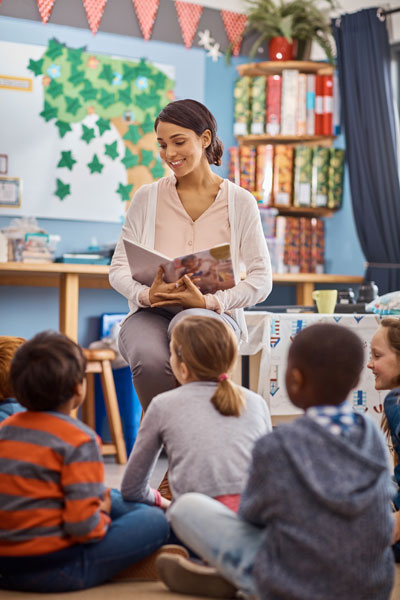
He stressed the importance of religious education programs to be attentive to children and young people, and to connect them to the sacramental aspects of our faith, with the Eucharist being top priority. Talk about a moment of wonder.
More than 50 years ago, renowned conservationist, Rachel Carson, began work on an essay that would, after her death, become the best-selling book, “The Sense of Wonder: A Celebration of Nature for Parents and Children.” In it she writes, “If a child is to keep alive his inborn sense of wonder… he needs the companionship of at least one adult who can share it, rediscovering with him the joy, excitement, and mystery of the world we live in.”
While Rachel focused on nature, which in itself is a revelation of God, her thought is meaningful in the realm of religious faith, as well, where every child needs the companionship of at least one adult who can share the wonder of sacramental faith, with its joy, excitement and mystery.
Being such a companion is the privilege of every Catholic school teacher and catechist.
As we embark on the journey, there are several important things to do:
Nurture your own sense of wonder – Remember the words of Scripture: “And a little child will lead them.” Rediscover your wonder by catching it from your students. Of course, this is easier when students are young because they begin to lose that sense as they approach puberty. If you teach middle or high school students, ask them what makes them wonder, and be prepared to share some of your own observations, as well.
Step out of the noise – Give yourself the gift of quiet and use that time to reflect on what you see or hear or use that time for prayer. Noise is one of the greatest distractions to the spiritual life, for adults and children. Give your students that gift, as well, either in the classroom or the sacred space of the church or chapel.
Find a spiritual director – Retreat centers and religious orders often have spiritual directors in residence. Your diocesan offices may also have a list of certified spiritual directors. As my monsignor friend reminded me, “It’s important we never stop growing in our faith.” As we grow, we come to embrace, or rediscover, the joy, excitement and mystery that we want to share with our young students, as they grow in their faith, as well.
Mine your religious education textbooks – There is not only a wealth of information in all of the RCL Benziger religion curriculum texts, but a trove of suggestions, examples and tips for engaging students in the formation of their faith. Some of them will fit in perfectly as you tap into your students’ sense of religious wonder and deepen their relationship with God.
 About the Author
About the AuthorMary Regina Clifford Morrell, mother of six and grandmother to nine, is a Catholic journalist, author, and syndicated columnist who has served the dioceses of Metuchen and Trenton, New Jersey, and RENEW International in the areas of catechesis and communication.
Product Highlight
Be My Disciples Second Edition - with the Family Life Connection
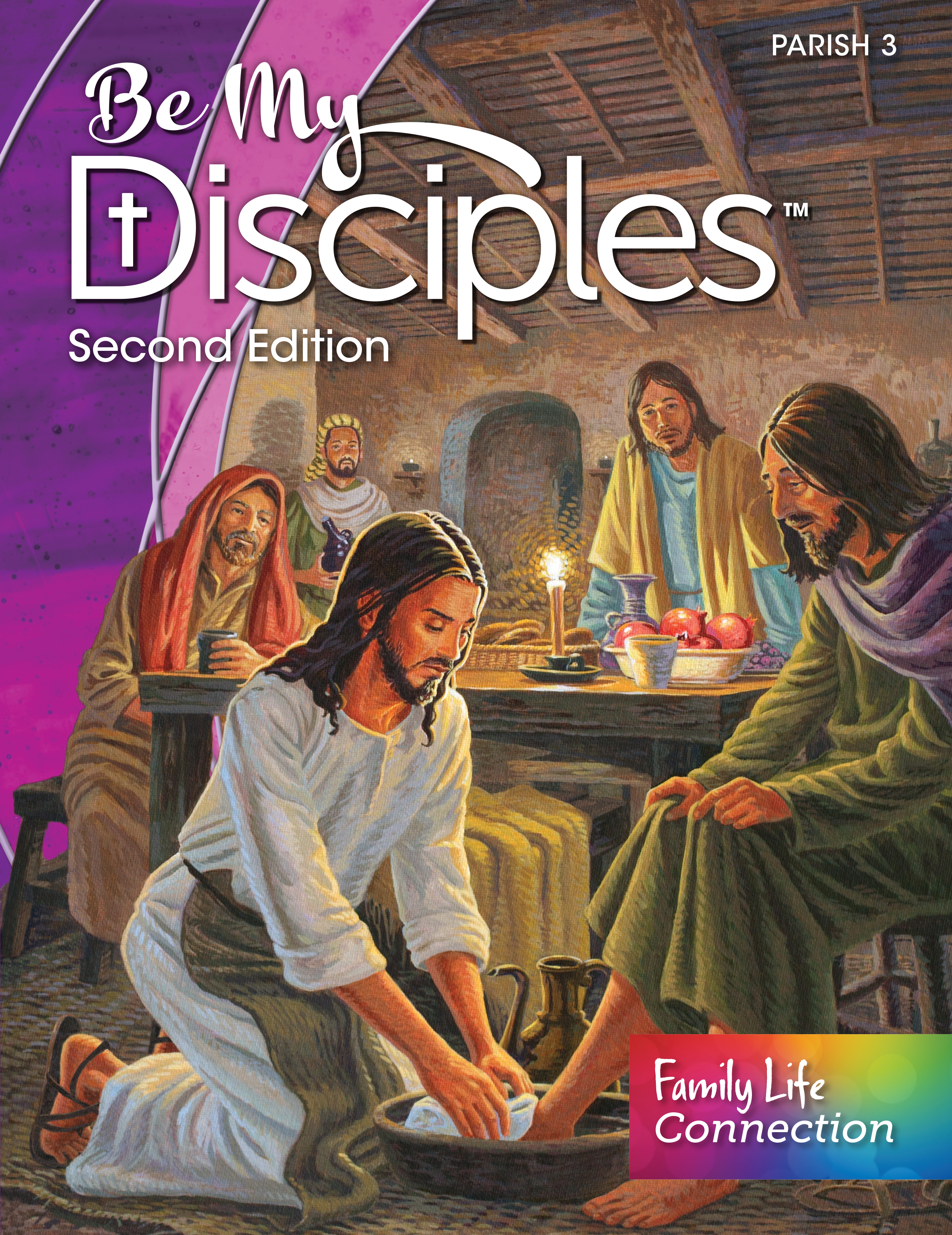
This new Parish Program for grades 1-6 now includes the Family Life Connection, an amazing family resource built right into the Student Edition textbook! Students will take home this two-page insert to help them build the skills they need to live healthy, holy lives. This newly updated and expanded edition encourages children to understand their role within the parish community and continue to grow in their identity as sons and daughters of God.
In light of the second annual World Day for Grandparents and the Elderly, established by Pope Francis in 2021 and observed on the third Sunday of July, I was asked to write an article on the unique experience of senior grief. I interviewed a psychologist and family counselor who serves in a grief support program, and a number of parish bereavement and consolation coordinators.
Across the board, they identified loneliness as the most prevalent problem for seniors, and interestingly, not only following the loss of a loved one. Older family members, neighbors, or friends are often hampered in their ability to get from place to place. Many no longer drive, and those who do are often much more fearful of driving than when they were younger.
 In my family, I have one aunt left, my mother’s sister. She has lost all four of her siblings, her husband, a late-in-life male companion, most of the extended family of her generation, and a daughter – one of her five children. We recently lost my cousin, her niece, and my aunt was inconsolable at the wake. “I’m so tired of burying my family,” she cried. “I’ve lost so many, and I miss them so much.”
In my family, I have one aunt left, my mother’s sister. She has lost all four of her siblings, her husband, a late-in-life male companion, most of the extended family of her generation, and a daughter – one of her five children. We recently lost my cousin, her niece, and my aunt was inconsolable at the wake. “I’m so tired of burying my family,” she cried. “I’ve lost so many, and I miss them so much.”
As their spouses, friends and children die, seniors are left more and more alone and often cut off socially, unable to visit friends, join others for shopping or make it to Mass or parish programs. They become all the more aware of their own mortality. It can be frightening.
The psychologist shared what she considered to be the most important gift we can give our seniors – to “provide support in the form of a listening ear and offer of ongoing social connection. Like anyone grieving, the elderly want to feel seen and heard.”
Bereavement ministries also mentioned the problem for many seniors of not being tech savvy. It often prevents them from staying on top of important responsibilities and programs, like banking, social security, Medicare, health insurance, or simply having the opportunity to connect with grandchildren in a way grandchildren respond to – like texting.
In the remaining days of summer, before school takes off like a roller coaster, consider sharing your time and talent with the elders of your communities. Take a senior to lunch, provide that listening ear, or teach them to text or become familiar with a computer. Or take your children with you and let them do the tech teaching!
It doesn’t take a lot to help older members of our families, parishes, or neighborhoods know they are seen and heard, and loved. A cup of tea, help around the house, a heat-and-eat meal or two, a box of their favorite treats, and an opportunity to share them with you.
It’s also a commandment to “honor your mother and father,” which would necessarily include grandparents and, hopefully, those of advancing years.
Pope Francis asks us to “Please, cherish the elderly!” It’s a beautiful lesson for our children and our students to learn, as well.
What can we do now, as well as during the school year, to honor seniors and help them fight loneliness?
Call them. A phone call is much more personal than a text and preferred by most seniors. For those who live alone, hearing another’s voice at the end of the line is a gift and helps them feel more at ease knowing someone is checking in with them. “I’ve fallen and can’t get up!” is not just a commercial.
Write them. There is something very special about receiving a letter in the mail. Seniors who are still capable are often happy to write back and share their stories. When a line of communication begins, it gives seniors something to look forward to and is often a bright spot in their day. Senior residential centers often have pen pal programs in place. You might want to check with one in your area and consider having students write to residents during the year, as well.
Go for a walk. Getting some sun and fresh air does wonders for the body. How and where you walk will be dependent on your senior’s physical condition, but even a short walk on level ground is something for them to look forward to. If walking is out of the question, a game of cards outdoors, engaging in a hobby, or putting together a puzzle on the porch in nice weather is a healthy choice for both of you.
Say the Rosary together. If praying a Rosary is an important devotion for your senior, it will have even more meaning shared with you. Or pick a Mass which has the recitation of the Rosary following and go together. Coffee and a donut on the way home sound good, too.
The value of being present to our elders is not in an elaborate plan but in the simple day-to-day activities they may be missing now because they are alone or their physical or mental state has changed. At the heart of it all is a desire for company and the knowledge that someone cares about them.
 About the Author
About the AuthorMary Regina Clifford Morrell, mother of six and grandmother to nine, is a Catholic journalist, author, and syndicated columnist who has served the dioceses of Metuchen and Trenton, New Jersey, and RENEW International in the areas of catechesis and communication.
Product Highlight
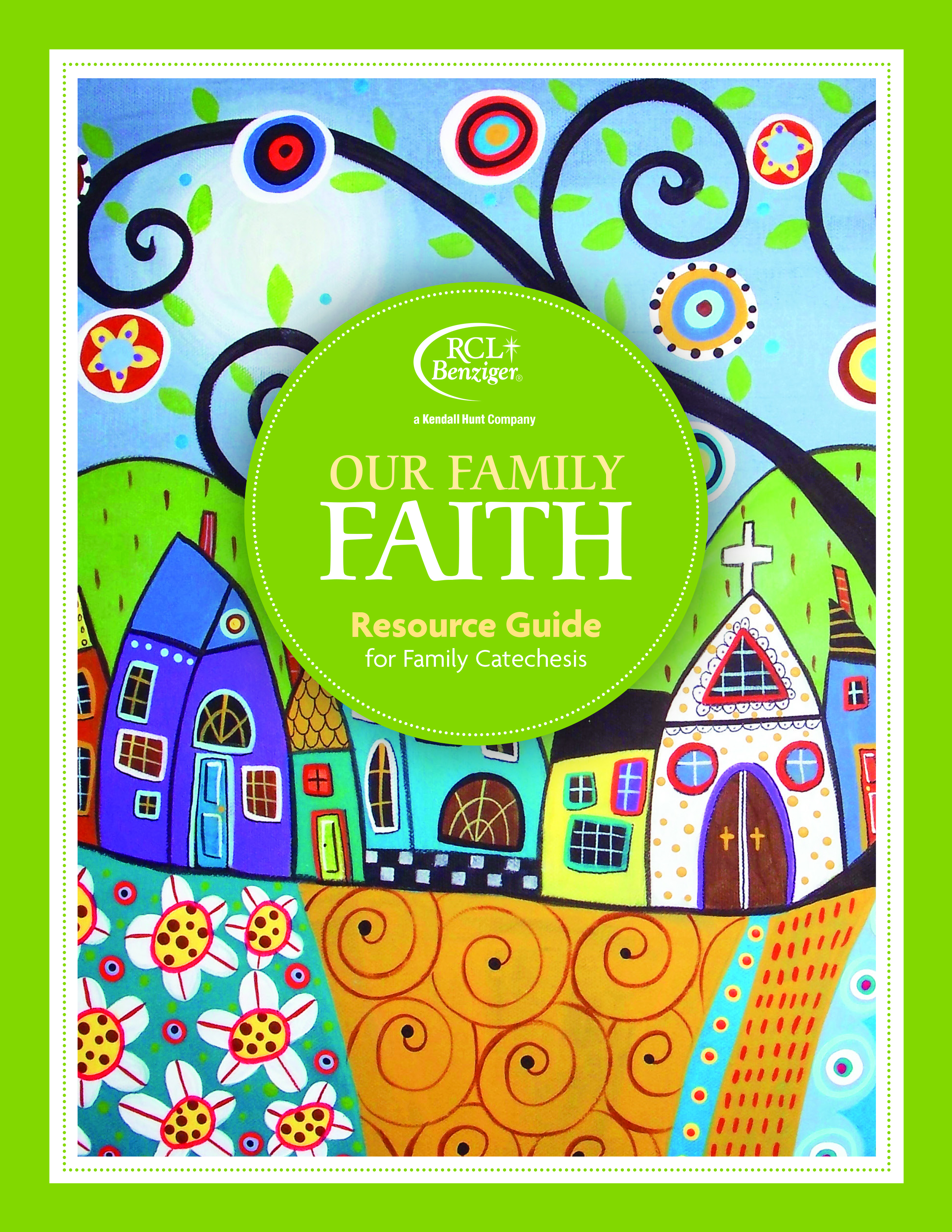 Our Family Faith
Our Family Faith
We listened when catechetical leaders asked for faith formation models that better engage families and support parents as the primary catechists of their children. We recognized the need for flexible and customizable resources that are simple, affordable, and effective.
“Where are you?”
It’s the first question God asks of Adam in the Garden of Eden, and it’s a question I’ve asked my children hundreds of times when they were young.
 Loving parents do that. They want to know where their children are, including their adult children, not only physically but in their heads, as well. What do they think, what’s important to them, and what do they hope for the future?
Loving parents do that. They want to know where their children are, including their adult children, not only physically but in their heads, as well. What do they think, what’s important to them, and what do they hope for the future?
It seems Jesus understood that the art of asking good questions constitutes an important skill when engaging young disciples in the practice of their faith – an art worthy of developing for this new school year.
As lesson plans are in the making and textbooks being reviewed, a question we may ask ourselves is “Why do we, and our students, need to be reflective?”
Renowned educator, Thomas Groome, taught about the Catholic principle of sacramentality. The principal says that everything in creation may reveal God, and underscores the connection between God’s revelation, reflection, and faith. “God’s presence and grace in the ordinary things of life justify the everyday life experiences as a source of reflection and conation [purpose]. Likewise, newly gained wisdom needs to be put into action, for the participants to be true ‘agents’ of their own faith.”
Jesus understood that his followers were people in process. His questions were meant to encourage that process so they could continue to grow in faith and come to develop a deep relationship with God.
How might we help that process in students this year, following the example of Christ and his questions?
Familiarize yourself with the questions Jesus asked, read them in context of Scripture, and pray with them, looking also for responses from those to whom he spoke:
- “Who do people say that the Son of Man is?” … “But who do you say that I am?” (Read Matt. 13-15)
- “O you of little faith, why did you doubt?” (Read Matt 14:25-33)
- “Which of these three, in your opinion, was neighbor to the robbers’ victim?” (Read Luke 10:30-37)
- “What do you want me to do for you?” (Read Lk. 18:35-43)
- “What profit is there for one to gain the whole world and forfeit his life? … What could one give in exchange for his life?” (Read Mark 8:34-38)
- “Do you want to get well?” (Read John 5:5-9)
Consider that every question you ask does at least one of the following:
- Engages students, reveals something about a student, encourages students to a higher level of thinking, teaches a lesson, fosters self-correction, builds relationships, reinforces a thought, nurtures reflection.
Remember the most important principle:
- Questioning is just one of many methods or tools for teaching religion and forming faith in the classroom, but, as the “General Directory for Catechesis” stresses, nothing is more important in every phase of the catechetical process than the person of the catechist, whether it be a Catholic school teacher, parish catechist or parent.
- The ability to be a faithful witness and live the Gospel are gifts of the Holy Spirit to the catechist and serve as the soul of catechetical ministry.
As the new school year gets underway, we can return to the words of St. Pope John Paul II, who was a continual champion of Catholic education and Catholic school teachers: “In order that the Catholic school and the Catholic teachers may truly make their irreplaceable contribution to the Church and to the world, the goal of Catholic education itself must be crystal clear. Beloved sons and daughters of the Catholic Church, brothers and sisters in the faith: Catholic education is above all a question of communicating Christ, of helping to form Christ in the lives of others.”
 About the Author
About the AuthorMary Regina Clifford Morrell, mother of six and grandmother to nine, is a Catholic journalist, author, and syndicated columnist who has served the dioceses of Metuchen and Trenton, New Jersey, and RENEW International in the areas of catechesis and communication.
Product Highlight
Catholic Resources - Back to School Resources

For the back-to-school season, we know you’re determined to start the year off right. Whether you’re a new or veteran teacher, you still need time to stop and get back into the back-to-school frame of mind. We have prepared articles, prayers, and videos to help!
If you have been looking for a fresh and structured way to share the key events of Jesus’ life and ministry, consider how the Rosary can be your helper in lesson planning. In the Rosary, we recall the significant events in the story of Jesus and Mary, his mother. We are remembering the life of Jesus through Mary’s eyes. Tradition has it that Mary appeared to Saint Dominic around the year 1221 and gave him the Rosary, directing him to teach people this devotion. So, the Rosary has always been a teaching tool.
 On August 15, we celebrate the Assumption of Mary, the fourth Glorious Mystery of the Rosary. This feast commemorates our belief that when Mary died, her body was "assumed" into heaven to be reunited with her soul instead of going through the natural process of physical decay. In 1950, Pope Pius XII declared the Assumption of Mary the official dogma of the Church.
On August 15, we celebrate the Assumption of Mary, the fourth Glorious Mystery of the Rosary. This feast commemorates our belief that when Mary died, her body was "assumed" into heaven to be reunited with her soul instead of going through the natural process of physical decay. In 1950, Pope Pius XII declared the Assumption of Mary the official dogma of the Church.
The dogma of the Assumption assures us that Mary reigns in heaven with her son. Mary was in the Upper Room when the Resurrected Lord appeared, and then again at Pentecost. We can imagine her standing among the apostles as they witnessed Jesus ascend into heaven. Mary’s story reminds us of our hope of eternal life with Christ.
In the Joyful Mysteries of the Rosary -- Annunciation, Visitation, Nativity, Finding Young Jesus in the Temple -- we see that Mary is a key actor in the drama of salvation. In the Sorrowful Mysteries, we recall Mary accompanying Jesus in his Passion and at the foot of the Cross. In the Luminous Mysteries, Mary is there at the Wedding Feast of Cana and throughout Jesus’ ministry.
Our Bishops remind us, “The repetition in the Rosary is meant to lead one into restful and contemplative prayer related to each Mystery. The gentle repetition of the words helps us to enter into the silence of our hearts, where Christ's spirit dwells. The Rosary can be said privately or with a group.” Instructions for the Rosary are at https://www.usccb.org/how-to-pray-the-rosary, as well as in Our Family Prays.
Strengthen Prayer Habits: Teaching about the Rosary also offers an opportunity to review and commit to memory traditional Catholic prayers; The Apostles Creed, Our Father, Hail Mary, and Glory Be to the Father.
Reflection Activity: Invite students to retell one of the events of Jesus’ life from the perspective of an eyewitness. They should begin, “I was there when Jesus…” and then retell the story from their point of view. They might also mention seeing Mary on the scene and describe their impressions of her as events unfolded.
Rosary as Review: During the school year, expand students’ learning about the events of Jesus’ and Mary’s lives in the story of salvation. In Blest Are We Faith in Action, check the Director’s Resource.
 About the Author
About the AuthorDr. Lauri Przybysz specializes in equipping families to live their vocation to be domestic churches and signs of God’s love. Lauri received the Doctor of Ministry from the Catholic University of America, and she has been both a Catholic middle school religion teacher and a faith formation coordinator at the archdiocesan and parish levels. She is the mother of six children and grandmother of 21.
Product Highlight
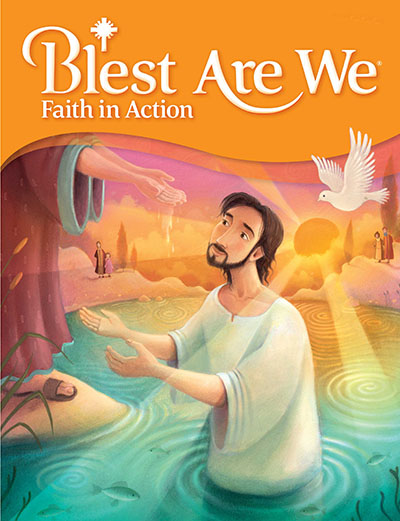 Blest Are We Faith in Action - School Edition Grades K-8
Blest Are We Faith in Action - School Edition Grades K-8
Blest Are We Faith in Action invites all learners to explore and grow in Faith, Word, and Action. Using an integrated approach, each unit is based on a particular theme or area of Catholic belief and practice. This theme is studied over four individual chapters that correspond to the four pillars of the Catechism: What Catholics Believe, How Catholics Worship, How Catholics Live, and How Catholics Pray. In this way, the essentials of Catholic teaching are presented in an integrated and balanced approach that helps students learn and deepen their faith and Catholic identity.
One of our favorite summer dishes is ambrosia, a mixture of fruits, coconut flakes, mini marshmallows, cherries, and whipped topping. While the sugary additions diminish the healthy aspect, my sons will fight over the last bowl and have always agreed to the meaning of ambrosia as “nectar of the gods.”
I’ve recently discovered that ambrosia is also the term used for a mixture of pollen and nectar that worker bees feed to bee larvae and has an additional significance because Saint Ambrose is a patron of bees, beekeepers, and candlemakers.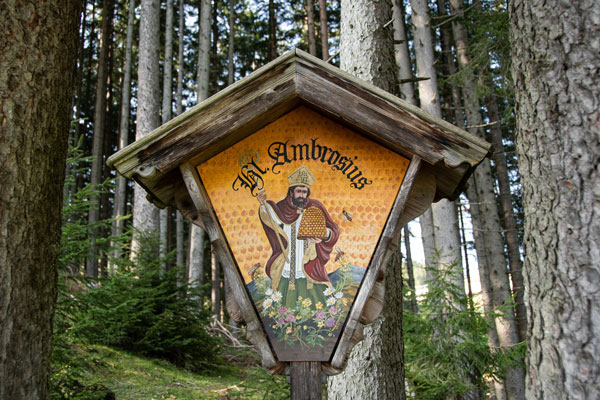
When Saint Ambrose was a baby, so the legend goes, a swarm of bees landed on his face, leaving a drop of honey before moving on to their hive. Saint Ambrose’s father was convinced that the honey was a symbol that his son would be blessed with a honeyed tongue, and as it turns out, he certainly was.
Saint Ambrose was a prolific preacher, a doctor of the Church, and one of several saints who are connected with bees, beehives, and honey, all of which played a part in the early symbolism of the Church. Saint Ambrose saw the beehive, where there is a shared devotion, work and effort for the good of the colony, as a symbolic of the Church.
Certainly, bees, particularly honeybees, have a number of admirable characteristics that can serve as a model for us as Catholics and as educators. So, what is it about bees?
They are a symbol of strength and endurance – Given their aerodynamic deficiencies (chubbiness), honeybees are a marvel of flight. Bees have an incredible ability to carry more than 100 times their weight and can find their way back to the hive more than eight miles away carrying their weight in pollen. Any educator who has ever stood in a classroom understands the need for these characteristics for Catholic school teachers.
They act as communicators – Good communication is essential to the survival and productivity of the hive, just as it is in the world of educators. Bees communicate by releasing strong-smelling pheromones, carrying the scent of flowers back to the hive so other workers can find food sources, and though dancing. Fortunately, teachers don’t have to dance to communicate, though it could be the highlight of the year for students.
They are collaborators – Bees are hustlers, but they don’t hustle for themselves; they hustle for the hive. Catholic school teachers are also part of a larger body, working together for a common cause – to form disciples of Christ who are confident students, who are thinkers and doers, and who value the end result of learning.
The fruit of their efforts is sustenance – Bees create honey for the life of the bees in their hive, and fortunately for us, they make more than they can eat, so we benefit from their efforts. Honey is not only a food but has healing properties, as well. Similarly, Catholic school teachers feed the mind and spirit of their students, who ultimately go out into the world and, hopefully, work for its good.
This year, consider adding a bee or two to your classroom decorations. They may inspire a conversation about the power of bee characteristics and the role students have as stewards of the earth.
Also, If you use a candle for private prayer or meditation as I do, consider making it a beeswax candle for the beginning of a new school year and reflect on this little reminder from St. Augustine: “All of you who stand fast in the Lord are a holy seed, a new colony of bees.”
 About the Author
About the AuthorMary Regina Clifford Morrell, mother of six and grandmother to nine, is a Catholic journalist, author, and syndicated columnist who has served the dioceses of Metuchen and Trenton, New Jersey, and RENEW International in the areas of catechesis and communication.
Product Highlight
 Blest Are We Faith in Action - School Edition Grades K-8
Blest Are We Faith in Action - School Edition Grades K-8
The Blest Are We Faith in Action religious education program engages children, youth, and their families in learning what Catholics believe, how Catholics worship, how Catholics pray, and how Catholics live. Our technology-enhanced learning resources, including eGuides, eBooks, eAssessments, and online chapter reviews expand learning opportunities for students and flexibility for teachers.
Students will enjoy interactive connections with their textbooks, while teachers will find a variety of useful content for helping students on their formative journey of faith.
Spiritual growth is ongoing and lifelong, and all teachers benefit from staying connected to the source of our life, Jesus. As the new school year approaches, consider adding one or two practices that draw you closer to God and toward deeper, more life-giving relationships.
 Resources for spiritual growth and renewal are at your fingertips in your teacher manual for Blest Are We Faith in Action or Be My Disciples. You will discover prayer ideas that you can adopt for your own personal enrichment and spiritual growth. Your own family will be blessed by the family enrichment ideas in the take-home pages provided for every chapter.
Resources for spiritual growth and renewal are at your fingertips in your teacher manual for Blest Are We Faith in Action or Be My Disciples. You will discover prayer ideas that you can adopt for your own personal enrichment and spiritual growth. Your own family will be blessed by the family enrichment ideas in the take-home pages provided for every chapter.
Here are some examples of spiritual practices you can easily incorporate into your restful summertime habits.
Prayer & Gratitude
- Create and pray a special grace before meals.
- Share one prayer intention for your partner to pray before he sleeps.
- Say the rosary together at the start of a car trip.
- Make a running list of what you are thankful for.
- Sign up for email prompts for daily prayer.
- Learn about each other’s religion; visit each other’s churches.
- Create decorations for the current holiday season and display them.
- Engaged and dating couples, hold hands, and pray evening prayer before going home.
- Meet friends for a walk at dawn; greet the new day with gratitude.
Service
- Baby-sit a child together for a whole day.
- Take a teenager to the museum.
- Serve with a friend or family member at a soup kitchen.
- Plant and work a garden together with a buddy or child.
- Throw a party for your friends and do all the serving.
- Begin to donate a part of your income to a favorite charity.
- Sponsor a needy child in your community or abroad.
- Clean out your closets and drawers and give good items away. Here is a prayer for Spring Cleaning that works for Summer, too.
Selflessness
- Give your partner the biggest and best portion of a snack or meal.
- Serve your body: Eat healthy; take vitamins.
- Create a budget for your future finances.
- Accompany a friend to one craft show or fishing trip – any activity that you would rather avoid – and look at it through their eyes.
Reconciliation
- Practice active listening. Make sure you are hearing what the other is saying and that they are hearing you.
- Identify one strength of your family of origin; forgive one weakness.
- When you are wrong, say, “I’m sorry; please forgive me.”
- When you are right, don’t gloat.
Journaling
- Write letters and email thoughts.
- Start a photo album for a visual journal or make a video. Why use only words?
 About the Author
About the AuthorDr. Lauri Przybysz specializes in equipping families to live their vocation to be domestic churches and signs of God’s love. Lauri received the Doctor of Ministry from the Catholic University of America, and she has been both a Catholic middle school religion teacher and a faith formation coordinator at the archdiocesan and parish levels. She is the mother of six children and grandmother of 21.
Product Highlight
 Family Life Second Edition
Family Life Second Edition
Family Life Second Edition is the newly updated edition of RCL Benziger’s leading K-8 supplemental program that addresses key concerns of today’s Catholic families. In every grade level, Family Life includes child safety education, promotes virtuous living, and strengthens Catholic identity.
The Family Life program reinforces the Catholic virtues and values that your students attain with their education. Family Life is an essential component of your school-based religious education program and meets Social and Emotional Learning (SEL) standards and benchmarks.
“Some days my daughter barely looks up from her phone. I’m worried she’s addicted.”
These words commonly echo in my therapy office, as people struggle with technological forces that are hijacking their nervous systems and destroying the landscape of their relationships.
But it doesn’t have to be this way. We can use proven practices to put these same forces to work for us to boost mental vitality, strengthen relationships, and reawaken spiritual health. This is what you will find in my new book, The Gift of Cultural Hurricanes.
Here is a preview, with some practical tips that can make things better for you and your children, starting now:
Confront the distractions and anxiety directly caused by technology: Yes, the cultural hurricane has fueled anxiety disorders to record high levels. In fact, the average anxiety level for teens today is the same as that of psychiatric inpatients in the 1950s! We can make two changes right now to mitigate the distracting, anxiety-producing impact of technology:
- Choose a proven strategy to reduce social media use, where our nervous system cannot help but to compare our everyday lives with the photo shopped highlight reels of those around us. For example, we can delete social media from our phones and only use our iPads or computers.
- Use parental controls or free software to block distracting websites from all family devices.
Re-awaken our awareness of spirituality and the sacred. Yes, the cultural hurricane has eroded authentic spiritual health. Belief in God is in steep decline, and, for the first time in our country’s history, less than half of Americans are part of a church, synagogue, or mosque. We can make two changes right now that can help us and our families to spiritually re-awaken.
- Use free apps, such as Insight Timer, to rediscover Holy Presence, focus our prayer time, or simply bathe our background attention in spiritually uplifting music.
- Re-purpose technology to re-awaken a sense of awe, mystery, and gratitude. For example, use applied brain science to skillfully create a daily gratitude journal to re-train our nervous system to appreciate the miracles that surround us every day. This sense of awe and mystery is typically the spark that re-awakens spiritual aliveness, both for us and for our children.
Transform our relationships. Yes, the cultural hurricane kills compassion and fuels the political polarization that rips apart families and destroys life-long friendships. One reason is that texting is replacing face-to-face human communication. This impedes learning empathy skills and fuels the current epic loneliness pandemic. However, technology can also help us to relearn empathy and recover emotional intelligence. Here are two small ways to return to love:
- By replacing texting with video apps we can immediately relearn and grow our awareness of nonverbal cues, such as facial expressions and tone of voice.
- We can re-establish technology-free family meals and create rituals that deepen empathy between family members and expand gratitude for family life.
Yes, we are living in a cultural hurricane that is hurting us and our relationships in unprecedented ways. However, we can use these same forces to transform our lives, re-awaken authentic spirituality, and transform our closest relationships in love.
If this strikes a chord with you, consider checking out my new book, The Gift of Cultural Hurricanes. In it, you will discover a 3-part, proven plan to guide you and your children to break our addiction to technology, re-awaken to the sacred, and recover our family relationships.
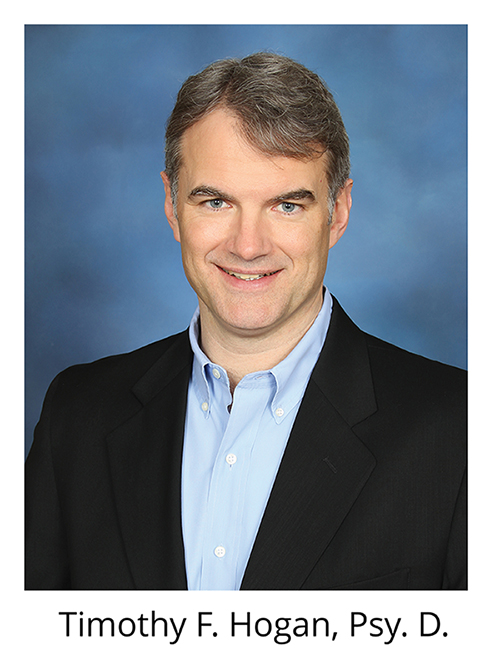 About the Author
About the AuthorDr. Tim Hogan is a writer, psychologist, and certified Imago Relationship Therapist who directs two counseling centers in Detroit. He has consulted and taught workshops for the Archdiocese of Detroit and contributed to the RCL Benziger Family Life series. RCL Benziger just published his new book, The Gift of Cultural Hurricanes: Tools to Rebuild Authentic Spirituality.
Product Highlight
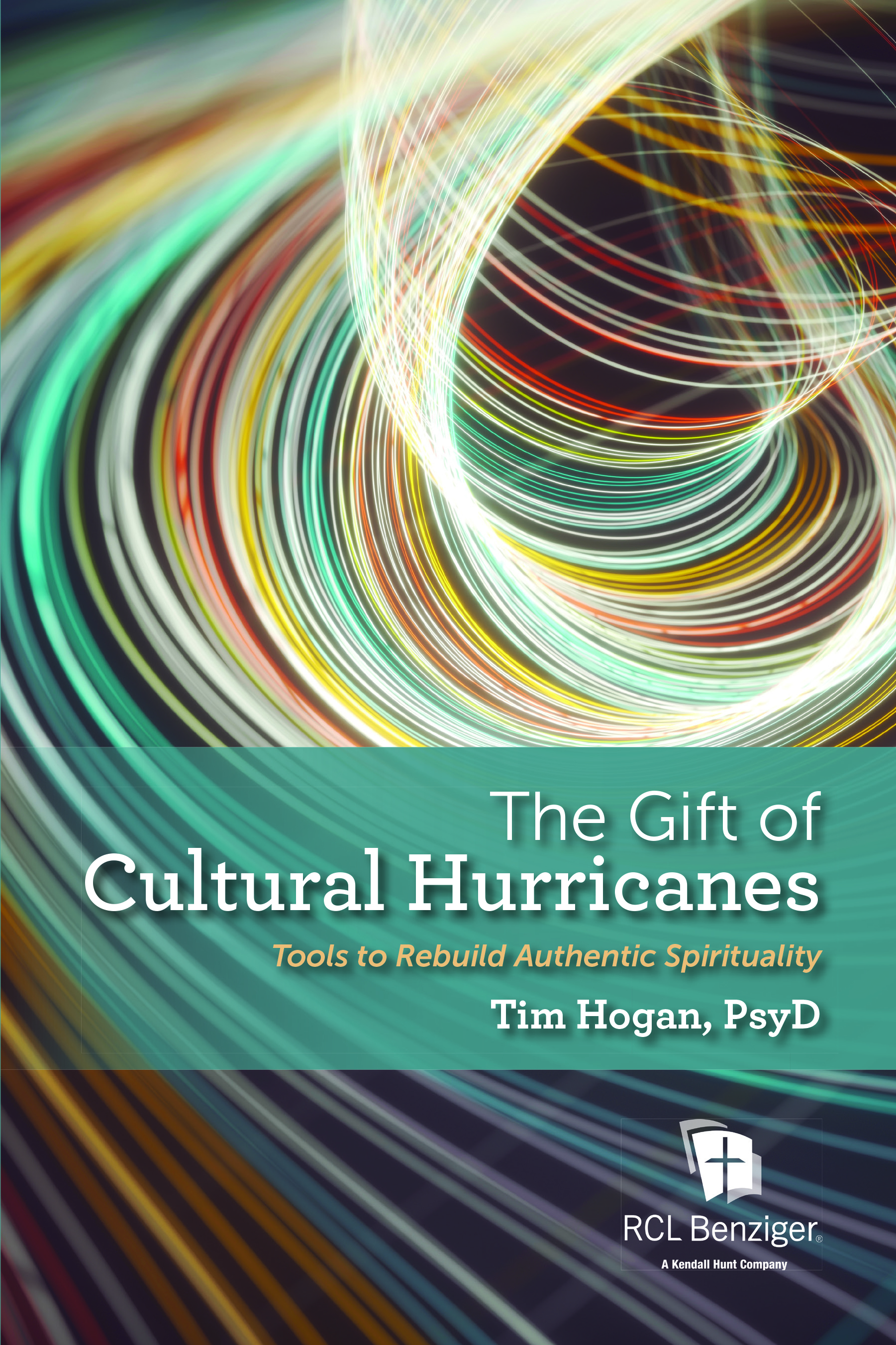 The Gift of Cultural Hurricanes: Tools to Rebuild Authentic Spirituality
The Gift of Cultural Hurricanes: Tools to Rebuild Authentic Spirituality
Dr. Hogan’s book includes a wealth of best-practice journal exercises for individuals, couples, families, and small faith communities After reading Dr. Hogan’s book, you will learn how the following can help you rebuild an authentic spirituality:
- Brain science
- Cooperative creation
- Digital fasting
- Embodied spirituality
- Emotional priming
- Empathic listening
- Gratitude
- Inner genius
- Inner darkness
- Intrusive thoughts
- Negativity bias
- Perspective of positivity
- Present moment
- Protected Scheduled Time
- Sacred reality of the Eucharist
- Seasons of suffering
- Self-awareness
All of my children were raised Catholic, went to Sunday Mass, received all their Sacraments, and were educated from K-12 in Catholic schools. And yet, when a crisis arises in their lives, they call me for prayer.
Now, with families of their own, I’m not sure why they are reticent to pray. I feel like somewhere, somehow, along the way, culture has influenced them that prayer is ineffectual and so not something to bother with. Prayers have taken on the cultural value of superstition and platitude.
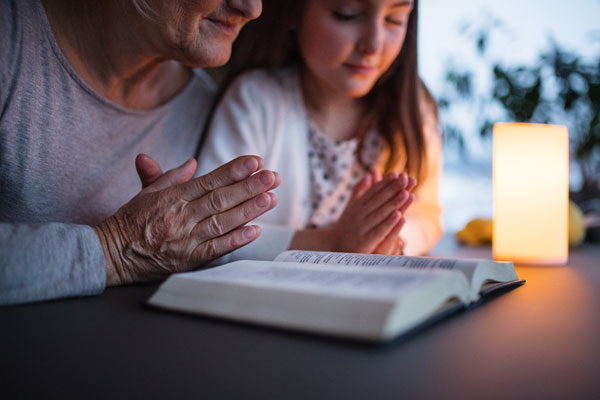 How often do we hear now, in the shadow of some unthinkable tragedy, “We don’t want your thoughts and prayers,” making it clear that many believe prayers won’t change things, won’t fix what’s happened, or make it better?
How often do we hear now, in the shadow of some unthinkable tragedy, “We don’t want your thoughts and prayers,” making it clear that many believe prayers won’t change things, won’t fix what’s happened, or make it better?
In some ways, it is easy to understand the frustration of those who are looking for answers to tragedy and looking for changes that will prevent tragedy in the future. We all know that prayers are not always answered the way we hoped for, and the natural result is disappointment and discouragement.
But it is important to understand that the purpose of prayer is not just to have our prayers answered when we want something. Prayer is meant first and foremost to nurture our relationship with God, to be in frequent conversation with God who loves us, and to help keep our hearts and minds open to God’s voice.
Prayer also builds our humility, which is not a weakness but a recognition that we are not God. We do not have all the answers, nor can we ensure that tragedies and losses will not happen. Part of that humility is the recognition that there are many times when we need to ask for forgiveness. Prayer is a means to that honesty before God.
Pope Francis says, “Praying is opening the door to the Lord so that he can do something. If we close the door, God can do nothing,” By doing something, the Holy Father is not just referring to God giving us that for which we ask, but in providing guidance in making decisions, moving us along the right path, inspiring us with hope and strength in overcoming obstacles, and forming us in faith.
As the summer moves along, there are several steps we can take to improve our prayer lives and help our students to do the same when school resumes.
Ask God for help in praying. Follow in the footsteps of the Apostle who reached out to Jesus and said, “Lord, teach us to pray just as John taught his disciples” (Luke 11:1). We can ask God to not only teach us to pray, but to inspire us through the Holy Spirit to pray because sometimes getting started is the hardest step to take.
Pray the name of Jesus. In one of my jobs, my office mate was a nun who prayed throughout the day by saying, “Jesus, help me.” Often it was in relation to computer problems, but she prayed those words so frequently it became like breathing, and I’ve never met a person more at peace. Saint Philip Neri taught, “The name of Jesus, pronounced with reverence and affection, has a kind of power to soften the heart.”
Pray continually. Well, that sounds like an impossible task, but it doesn’t mean sitting in your room or the church pew all day and offering prayers to God. Saint John Chrysostom preached that prayer is a state of mind and should serve as the foundation of our daily lives, taking place “even while walking in public or strolling alone, or seated in your shop, while buying or selling, or even while cooking.”
Pray for others. A close family member often posts on Facebook, “I don’t do thoughts and prayers, but send me some positive energy.” Recently, she developed Covid. I messaged her on Facebook, saying, “I know you don’t do thoughts and prayers, but I do, so I’m praying every day for your recovery.” Pope Francis said, “The first way to pray for someone is to speak to God about that person. If we do this frequently, each day, our hearts are not closed but open to others. Praying for other people is the first way to love them and be close to them in a concrete way.” And it’s a wonderful prayer practice for children.
In one of his many teachings on prayer, Pope Francis shared a beautiful thought that has stayed with me as a choral singer: “Prayer is a kind of musical staff, where we arrange the melody of our lives. It is not in contrast with daily work; it does not contradict the many small obligations and appointments; if anything, it is the place where every action finds its meaning, it is reason and it is peace.”
An excellent home and classroom resource is Our Family Prays: Catholic Prayers and Traditions, which is a collection of rituals, blessings, prayers, and traditions for families striving to keep prayers at the heart of their homes.
 About the Author
About the AuthorMary Regina Clifford Morrell, mother of six and grandmother to nine, is a Catholic journalist, author, and syndicated columnist who has served the dioceses of Metuchen and Trenton, New Jersey, and RENEW International in the areas of catechesis and communication.
Product Highlight
Our Family Prays & Catholic Prays and Practices
 Our Family Prays is a collection of rituals, blessings, prayers, and traditions meant to encourage and inspire Catholic families to keep prayer at the heart of their homes. It is organized by the seasons of the liturgical year and includes religious traditions and celebrations from around the world.
Our Family Prays is a collection of rituals, blessings, prayers, and traditions meant to encourage and inspire Catholic families to keep prayer at the heart of their homes. It is organized by the seasons of the liturgical year and includes religious traditions and celebrations from around the world.
This small book, Catholic Prayers and Practices, including The Order of Mass, contains traditional practices and prayers that unite us as Catholics. It is designed to support you in your faith life, and it can assist you in helping the younger members of our Church learn, grow and live as active members of the Catholic community.
 This resource can be used for private, family, or communal prayer. The Order of Mass section incorporates the language of the revised Roman Missal. Share the faith by giving copies of this book to others. In this way, you are sharing in the ministry of our Lord, Jesus Christ, who called us to be his disciples and to share the Good News with all people.
This resource can be used for private, family, or communal prayer. The Order of Mass section incorporates the language of the revised Roman Missal. Share the faith by giving copies of this book to others. In this way, you are sharing in the ministry of our Lord, Jesus Christ, who called us to be his disciples and to share the Good News with all people.
As I sit at my desk, I find my head and heart full of many things I want to share with you as you prepare for another school year to begin. I am filled with abundant gratitude as I think of the unique gifts each of you brings to our Early Childhood profession within our Catholic churches and schools. The beginning of the school year gives us new opportunities and the ability to frame a fresh vision for the year. We control the environment we set for the children and families we will serve this year and every year.
I believe this school year gives us a unique opportunity to think about how we move forward from a scarcity mindset to a gratitude mindset. Not only is the shift essential for our faith formation, but in God’s grand design, he has wired our bodies to be energized by and to thrive on gratitude. Neuroscience has proven that practicing and embracing gratitude rewires the human brain (Neuro Health Association, 2020). Participants in a controlled study were divided into three groups and given journaling assignments. One-third (gratitude group) journaled everything they were grateful for daily. The second third (irritated group) journaled about everything that irritated them. The last third (neutral group) journaled about daily events but was not permitted to attach emotions to the events. At the end of the study, the gratitude group reported having a more optimistic view of life, being more physically active, and having fewer doctor visits; they also reported improved sleep, reduced anxiety, and less fatigue. The science supported the old saying, “attitude matters” (Wong, 2017). God created our bodies and souls for gratitude in his grand design. Our responsibility is to shift from a scarcity mindset to a gratitude mindset to honor God.
How do you start to ensure the shift to gratitude-focused practice for this new school year? Take care of yourself and practice self-care. This shift begins with intentionality for the practices we choose and the words we use. We need to focus on the interconnectedness of the mind, body, and soul. God never intended for us to operate them in isolation from each other. If your bucket is empty, how will you ever fill the buckets of your students and families? You need to select self-care strategies that support your mind, body, and soul, and they will not look the same as someone else’s as God created each of us to be unique in his design. Do not measure your self-care strategies against others. You do not have to do them perfectly; they can be with others or solo, but they must be what helps you. Some ideas include making time for daily prayer, exercise, learning a new skill, crafts, and endless other possibilities for activities that will fill you with joy.
How do you commit to shifting your faith practices toward gratitude? Promise yourself not to take social media too seriously, as we often see “perfect lives” posted and can become jealous of other people’s blessings. Remember that few people post the “bad stuff,” so give yourself grace not to be perfect (Jaminet, 2020). Start by looking at your life, your school, and your children, and reframe your thoughts about gratitude to what Donald Demarco says, “Gratitude is a response to a gift” (Demarco, 2002). Gifts come in various sizes, and it is up to you to recognize and honor the simple, everyday gifts that appear before you. One of the greatest gifts we experience daily is the gift from God in his only Son Jesus. This gift is ever-present, but do you stop daily and find time to be grateful for the immeasurable sacrifice of God’s only Son? One way to honor and show gratitude is to commit to friendship and service to others. When we view our students and families as gifts and are intentional with our gratitude, I promise you that our daily dose of joy will double. This strategy creates a spiritual bond with God. Let us be honest—finding things to be angry about and ungrateful for on a difficult day is much easier than calming ourselves and focusing on the opportunities and gifts which are still present even on the worst days. Demarco calls gratitude “a memory of the heart; it is an expression of love and abiding friendship” (Demarco, 2002).
Pope Francis said, “Bearers of gratitude make the world a better place” (Vatican Media, 2020). In his reflection on Saint Luke’s Gospel (17:11-19) account of the ten lepers, Pope Francis notes that Jesus invited each leper to present themselves to the priests so the priests could certify his healing. The lepers did not stay around until they completely healed because they were grateful and trusted Jesus’s ability to heal them. Pope Francis describes the moment the one leper returns to Jesus to thank him for the healing as the time the world divided into two. Pope Francis said, “The world was divided into two; those who give thanks and those who do not. Those that give thanks are given grace” (Vatican Media, 2020). How often have you been stressed and prayed for grace as an educator? Instead, try starting with gratitude to find grace next time.
I am not suggesting that this mind shift from scarcity to gratitude is easy. I am asking you to consider how your gratitude practice guides your attitude. Children do not do what we ask, they model what they see. What commitment to gratitude will you make this year? How will this shift impact the environment and lives of the students and families in your care? How might it help you?
Perhaps you could start by just practicing what the gratitude group did in the scientific study described above. Journal about the things for which you are grateful each day. Start your year with gratitude, and add to your bucket daily. I promise you this simple but challenging mind shift will allow you to have a bucket that overflows into others. Joy is on your horizon this year, controlled by your attitude fired by gratitude.
I am grateful for all our Early Childhood educators, and I promise to think of you all in my daily gratitude reflections. Thank you for what you do, and may gratitude guide your attitude this year and fill your buckets with endless joy.
Chowdhury, M. R. (2022, March 25). The Neuroscience of Gratitude and How It Affects Anxiety & Grief. Retrieved from Positive Psychology: https://positivepsychology.com/neuroscience-of-gratitude/
Demarco, D. (2002). Gratitude. Retrieved from Catholic Education Resource Center: https://www.catholiceducation.org/en/culture/catholic-contributions/gratitude.html
Jaminet, E. (2020, June 2). A Guide to Growing in Gratitude. Retrieved from Catholic Digest: https://www.catholicdigest.com/amp/faith/spirituality/a-guide-to-growing-in-gratitude/
Neuro Health Association. (2020, July 4). Neuroscience Reveals: Gratitude Literally Rewires Your Brain to be Happier. Retrieved from Neuro Health: https://nhahealth.com/neuroscience-reveals-gratitude-literally-rewires-your-brain-to-be-happier/
Vatican Media. (2020, December 30). Pope Francis: ‘Bearers of gratitude’ make the world a better place. Retrieved from Catholic News Agency: https://www.catholicnewsagency.com/news/47000/pope-francis-bearers-of-gratitude-make-the-world-a-better-place
Wong, J. B. (2017, June 6). How Gratitude Changes You and Your Brain. Retrieved from Greater Good Science Center: https://greatergood.berkeley.edu/article/item/how_gratitude_changes_you_and_your_brain
 About the Author
About the AuthorPam Perrino is an early childhood advocate, educational consultant, and former preschool teacher. She has worked as a childcare center director with the NAEYC and Professional Development Coordinator for Ohio’s Association for the Education of Young Children. Pam also serves as an adjunct professor in the Early Childhood Leadership and Advocacy program at the University of Dayton.
Product Highlight
 Stories of God's Love
Stories of God's Love
Stories of God’s Love for preschool (ages 3-4 or 4-5) and kindergarten is an easy-to-use, developmentally appropriate early childhood curriculum designed to engage children and their families in learning about their Catholic faith and in making the connections between Scripture and daily life. Designed as the foundational cornerstone for each of RCL Benziger’s basal programs; Stories of God’s Love is aligned, connected, and integrated in a way that provides for the optimum sequential growth in a child’s faith formation. In addition, the program provides the flexibility needed to customize your school's faith formation program.
Connecting with children’s social and emotional needs, the hands-on activities embedded within the curriculum are age and developmentally appropriate. Paired with the colorful illustrations, they engage the child and their family in creating a learning environment that mirrors God’s love for his children.
Pagination
Latest
Categories
Archives
- February 2015 (2)
- March 2015 (2)
- April 2015 (5)
- May 2015 (3)
- June 2015 (6)
- July 2015 (3)
- August 2015 (5)
- September 2015 (5)
- October 2015 (4)
- November 2015 (2)
- December 2015 (1)
- February 2016 (2)
- March 2016 (1)
- April 2016 (2)
- May 2016 (2)
- July 2016 (2)
- August 2016 (2)
- September 2016 (1)
- October 2016 (5)
- November 2016 (1)
- December 2016 (3)
- January 2017 (2)
- February 2017 (3)
- March 2017 (2)
- April 2017 (1)
- June 2017 (2)
- July 2017 (2)
- August 2017 (1)
- April 2018 (1)
- October 2018 (2)
- December 2018 (2)
- February 2019 (3)
- March 2019 (2)
- April 2019 (2)
- May 2019 (3)
- June 2019 (1)
- July 2019 (16)
- August 2019 (8)
- March 2020 (4)
- April 2020 (6)
- May 2020 (8)
- June 2020 (7)
- July 2020 (5)
- August 2020 (7)
- September 2020 (4)
- October 2020 (5)
- November 2020 (9)
- December 2020 (11)
- January 2021 (10)
- February 2021 (8)
- March 2021 (5)
- April 2021 (4)
- May 2021 (4)
- June 2021 (5)
- July 2021 (2)
- August 2021 (3)
- September 2021 (4)
- October 2021 (4)
- November 2021 (2)
- December 2021 (5)
- January 2022 (4)
- February 2022 (4)
- March 2022 (9)
- April 2022 (7)
- May 2022 (9)
- June 2022 (12)
- July 2022 (7)
- August 2022 (10)
- September 2022 (9)
- October 2022 (11)
- November 2022 (8)
- December 2022 (7)
- January 2023 (2)
- February 2023 (10)
- March 2023 (9)
- April 2023 (10)
- May 2023 (8)
- June 2023 (4)
- July 2023 (3)
- August 2023 (2)
